Modified C-type natriuretic peptide normalizes tumor vasculature, reinvigorates antitumor immunity, and improves solid tumor therapies
- PMID: 39167664
- PMCID: PMC11866103
- DOI: 10.1126/scitranslmed.adn0904
Modified C-type natriuretic peptide normalizes tumor vasculature, reinvigorates antitumor immunity, and improves solid tumor therapies
Abstract
Deficit of oxygen and nutrients in the tumor microenvironment (TME) triggers abnormal angiogenesis that produces dysfunctional and leaky blood vessels, which fail to adequately perfuse tumor tissues. Resulting hypoxia, exacerbation of metabolic disturbances, and generation of an immunosuppressive TME undermine the efficacy of anticancer therapies. Use of carefully scheduled angiogenesis inhibitors has been suggested to overcome these problems and normalize the TME. Here, we propose an alternative agonist-based normalization approach using a derivative of the C-type natriuretic peptide (dCNP). Multiple gene expression signatures in tumor tissues were affected in mice treated with dCNP. In several mouse orthotopic and subcutaneous solid tumor models including colon and pancreatic adenocarcinomas, this well-tolerated agent stimulated formation of highly functional tumor blood vessels to reduce hypoxia. Administration of dCNP also inhibited stromagenesis and remodeling of the extracellular matrix and decreased tumor interstitial fluid pressure. In addition, treatment with dCNP reinvigorated the antitumor immune responses. Administration of dCNP decelerated growth of primary mouse tumors and suppressed their metastases. Moreover, inclusion of dCNP into the chemo-, radio-, or immune-therapeutic regimens increased their efficacy against solid tumors in immunocompetent mice. These results demonstrate the proof of principle for using vasculature normalizing agonists to improve therapies against solid tumors and characterize dCNP as the first in class among such agents.
Conflict of interest statement
Competing interests:
G.M.C., Y.Y., R.E.G., A.N.-A., K.B., H.T., T.N., N.M.B. and E.M.B. are employees or advisors of PharmaIN Corp. PharmaIN Corp. holds the patents (WO/2021/252931 and WO/2018/175534) for PHIN-1314 (dCNP) and has partially sponsored research conducted at the University of Pennsylvania or Kyushu University. All other authors have had full access to all the data in the study and take responsibility for the integrity of the data and the accuracy of the data analysis. E.P. is a scientific founder and holds equity in Capstan Therapeutics. E.P. is on the scientific advisory boards of Parthenon Therapeutics and POINT Biopharma. S.Y.F. is a scientific founder and holds equity in Verendas Pharma Inc.
Figures
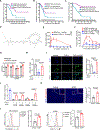

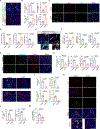
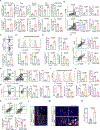


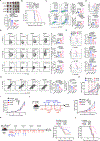
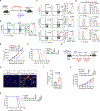
References
-
- Chauhan VP, Boucher Y, Ferrone CR, Roberge S, Martin JD, Stylianopoulos T, Bardeesy N, DePinho RA, Padera TP, Munn LL, Jain RK, Compression of pancreatic tumor blood vessels by hyaluronan is caused by solid stress and not interstitial fluid pressure. Cancer Cell 26, 14–15 (2014); published online EpubJul 14 (10.1016/j.ccr.2014.06.003). - DOI - PMC - PubMed
-
- Jain RK, Transport of molecules in the tumor interstitium: a review. Cancer Res 47, 3039–3051 (1987); published online EpubJun 15 ( - PubMed
Publication types
MeSH terms
Substances
Grants and funding
LinkOut - more resources
Full Text Sources
Medical

